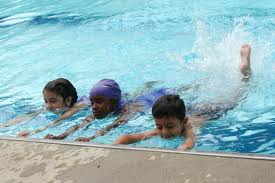Summer is here! Let’s stay safe in the sun, water and on wheels

Let’s have some fun on vacation or at home this summer—safely of course.
Got your sunscreen?
IN THE SUN: Under Food and Drug Administration rules, sunscreens must prove they filter out both ultraviolet B rays and ultraviolet A rays to claim they protect against skin cancer.
What you need: Sunscreen that is considered ‘broad spectrum’ and that has a sun protection factor, or SPF, of 15 and above.” Broad spectrum is FDA’s new way to describe a sunscreen that blocks both types of damaging rays. Here are a few best practices even when using the best sunscreen on the market:
–Reapply every two hours, according to the American Academy of Pediatrics, even on cloudy days and especially after the kids have been in the water. The FDA now says marketing claims like “waterproof” and “sweat proof” are “are exaggerations of performance.”
–Keep infants out of the sun as much as possible. Dress infants in lightweight long pants, long-sleeved shirts, and brimmed hats that shade the neck to prevent sunburn. However when adequate clothing and shade are not available, parents can apply a minimal amount of sunscreen with at least 15 SPF (sun protection factor) to small areas, such as the infant’s face and the back of the hands, the American Academy of Pediatrics recommends. If an infant gets sunburn, apply cold compresses to the affected area.
–Make sure the kids drink plenty of water. (Check the Academy’s website www.aap.org for more sun and safety tips.)
AT THE POOL AND BEACH:
Did you know the vast majority of drownings occur when children are being supervised?
To keep kids safe:
–Designate an adult to be a “water watcher.” Take turns, even if there’s a lifeguard on duty. Adults should be “touching distance” to preschoolers and toddlers around the water. Don’t rely on water wings or other inflatable toys either, pediatricians warn. They may give your child a false sense of security.
–Insist older kids swim with a buddy. Remind them to stay away from pool and hot tub drains where they can get sucked under water.
–If visiting friends or relatives with a pool, make sure young children are carefully supervised at all times and that pool gates are locked.
Around Bugs:
Use insect repellents containing DEET to prevent insect related diseases such as Lyme Disease which can be transmitted by ticks or West Nile virus which, among others, is transmitted by mosquitoes. According to the Centers for Disease Control and the American Academy of Pediatrics:
–For children over two months-old, use a repellant that contains 10- 30 percent DEET. DEET should not be used on children under 2 months of age.
–Ten percent DEET provides protection for about 2 hours – 30% for about 5 hours – choose the lowest concentration that will provide required length of coverage.
–Children should wash off repellents when back indoors.
–As an alternative to DEET, Picaridin has become available in the U.S. in concentrations of 5-10 percent.
ON A BOAT:
Insist that kids wear approved life jackets. If they gripe, tell them to check out this fun website from the National Safe Boating Council.
ON WHEELS:
Pack the bike helmets or rent them wherever you’re going. The whole family should wear their helmets whenever they’re on wheels — rollerblading, skateboarding or on a scooter. Many accidents happen in driveways, on sidewalks, and on bike paths, not just on streets. Helmets can reduce the severity of injuries up to 85 percent. When purchasing a helmet, look for a label or sticker that says the helmet meets the CPSC safety standard. Wrist guards and other protective gear are also important.

